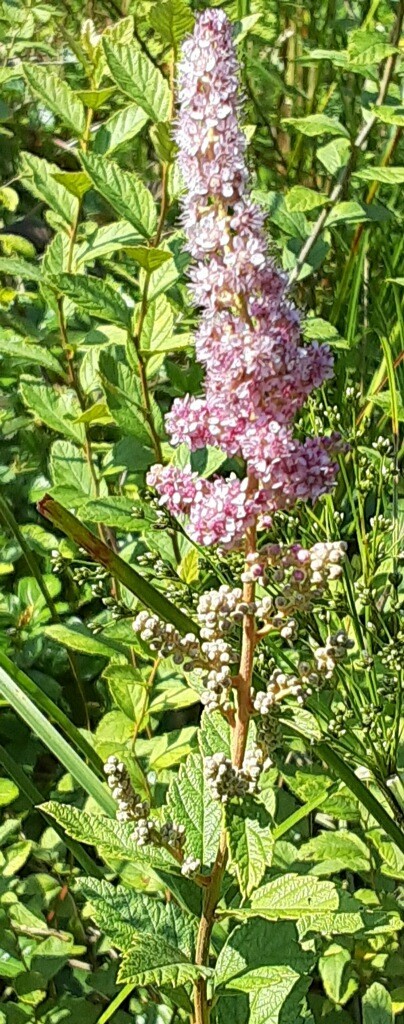By Susan Sprout
Last week you saw a white steeple, the bloom of a Ural False Spiraea. This week, here are the lovely pink steeples of a TRUE spiraea – Steeplebush or Spiraea tomentosa.
This woody shrub, a member of the Rose Family, is a native perennial ranging from Canada to North Carolina. Look for it in sunny wet meadows, moist old fields, and pastures. The plant pictured was growing in an acid bog, carpeted with mosses and low blueberries, within a broad area circled by hemlocks and black spruces – and way off the beaten path. Immediately the bright pink blossoms spiking upward caught my eye as I shouldered my way through the dimness of the low evergreen branches and out into the open. Wow…took my breath away…the flower clusters ruled the green of everything else.
This is not a tall plant – two to four feet – with short-stemmed leaves, oval and toothed, dark green, and leathery, arranged alternately on the tough stems. They usually grow unbranched and are crowned with terminal clusters made up of tiny, five-petaled flowers that open from the top down. The fruit is found in five tiny brown pods, each with a single seed that will drop when the dry pods split open.
Tomentosa, a part of its scientific name, refers to the matted hairs found at different places on the plant – under leaves, on stems, on fruit pods, and especially on first year stems.
As you check out Steeplebush in your field guides, don’t be misled by different plants that have the same common names. This one is also known as Meadowsweet and Hardhack. I suspect the later refers to the tough stems farmers dealt with when cutting them out of their pastures – to no avail!


